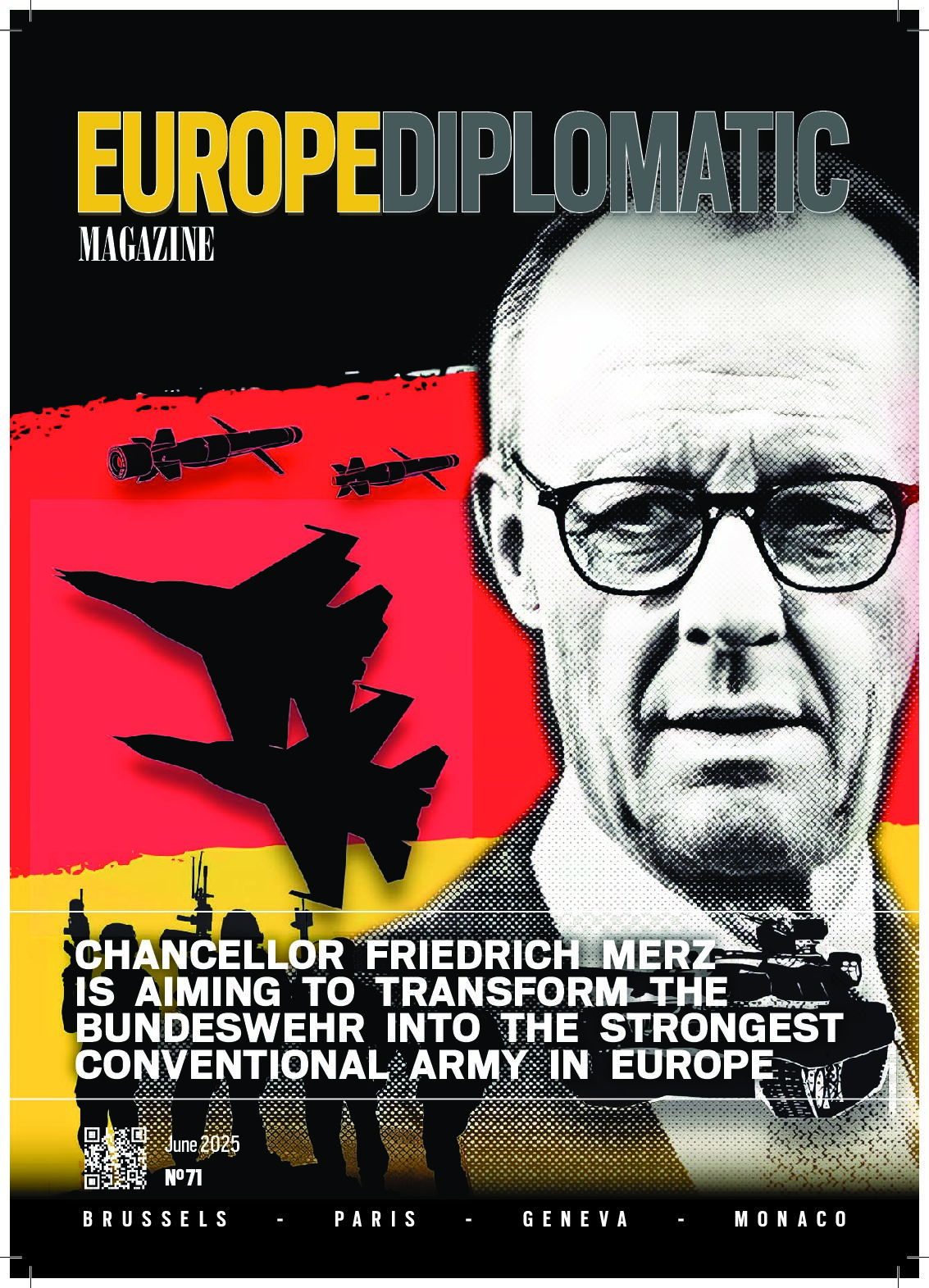President Nixon and General Secretary Brezhnev signing the (SALT 1) ABM Treaty (Limitation of Anti-Ballistic Missile Systems) on May 26, 1972
Leaders of the United States and what used to be called the Soviet Union have spent years trying to find ways not to kill each other. The idea was proposed by US President Lyndon B. Johnson in 1967 and the negotiations that followed became known as the Strategic Arms Limitation Talks, normally shortened to its acronym, SALT. The resulting treaty limiting the arsenals of nuclear weapons on both sides was finally signed in 1972 and, being the first of its kind, is known as SALT 1. It was signed by US President Richard Nixon and, for the Soviet Union, by Leonid Brezhnev. Everyone at the time knew it was just the first tentative step along what was bound to be a long and tortuous road. They also knew it was very, very important. It’s hard to believe it now but there was a genuine fear in the air of attack. At my primary school the teachers remembered the Second World War and were fearful of bombs and a sudden visit from the Luftwaffe. On a regular basis, the air raid siren on the school roof was tested (it was very loud and right above my classroom), although if there had been a real attack we kids would have had to hide under our desks. There was no air raid shelter. The noise of the siren was deafening, however.
In the 1960s – that decade of love, peace, sex and hallucinogenic drugs (and some very good rock music) – the idea of war was repulsive to us, but also unimaginable. So yes, we wanted the SALT 1 Treaty to work, although we didn’t really think about it much. It looked promising, too: it was signed in Moscow. SALT 1 was an amalgam of several agreements, including the ABM (Anti-Ballistic Missile) Treaty. The deal restricted the siting of ballistic missiles to one deployment area each, containing no more than one hundred missiles, which meant that each side could defend only a small part of their overall territory. That, in turn, meant that both remained subject to the deterrent effect of the other’s strategic forces. Both sides also knew, of course, that this was just the start, although START itself was still some years away.
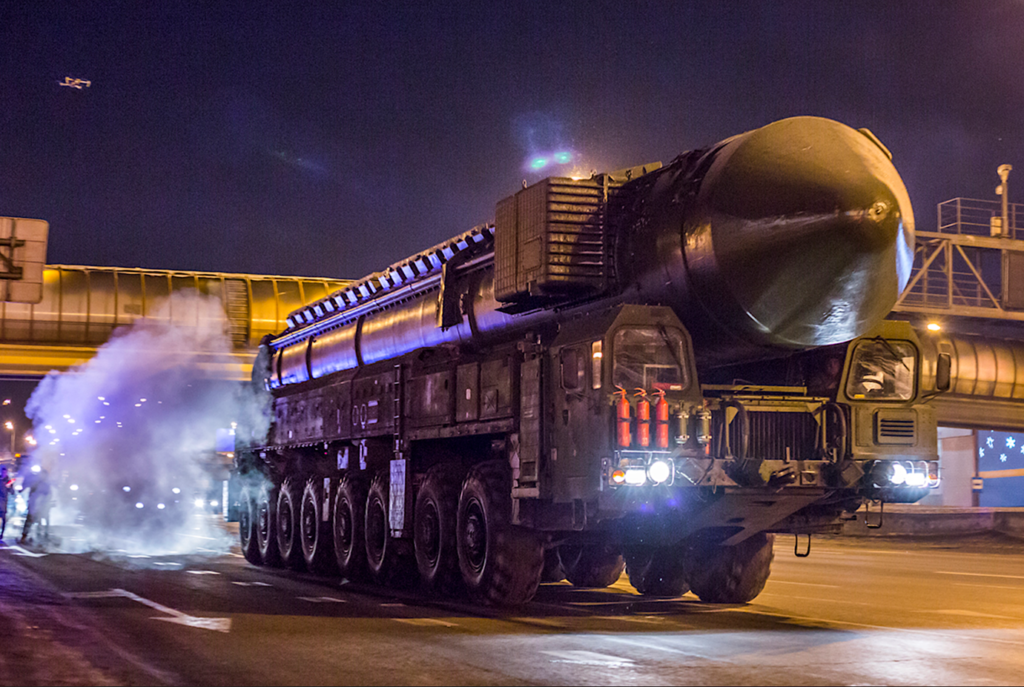
The Interim Agreement was one more step along that path, restricting the numbers of Intercontinental Ballistic Missiles (ICBMs) and Submarine-launched Ballistic Missiles (SLBMs) at the levels pertaining at that time for five years. This was very advanced stuff from politicians more committed to the avoidance of war, it seems, than those we have today, probably prompted by scary memories.
Now the Treaty is just a memory, too: the “New START Treaty” is no more, although Putin told his audience that he wasn’t “tearing up the Treaty”, he was just “stepping away from it”. His continual adjustment to the actual wording probably means nothing much. It’s just Putin’s unending fiddling with the semantics of it.
In the year that SALT 1 was signed there was much celebration of our apparently peaceful future and so it was that negotiations began on the next phase, to be known as SALT 2. They went on for seven years, largely because the arsenals of the two powers didn’t match, making it hard to strike a balance. The Soviet side had concentrated on building up its stock of missiles bearing large warheads, while the United States had been more interested in smaller missiles with much greater accuracy. The final version of SALT 2 also set limits on the numbers of “strategic launchers”, which means missiles that can be equipped with what are called “multiple independently targetable re-entry vehicles” (MIRVs), with the aim of deferring the day when eventually each side’s ICBMs would be vulnerable to attack from such devices. The deal also placed limits on the numbers of long-range bombers, SLBMs, ICBMs and such like, limiting them to 2,400 each.
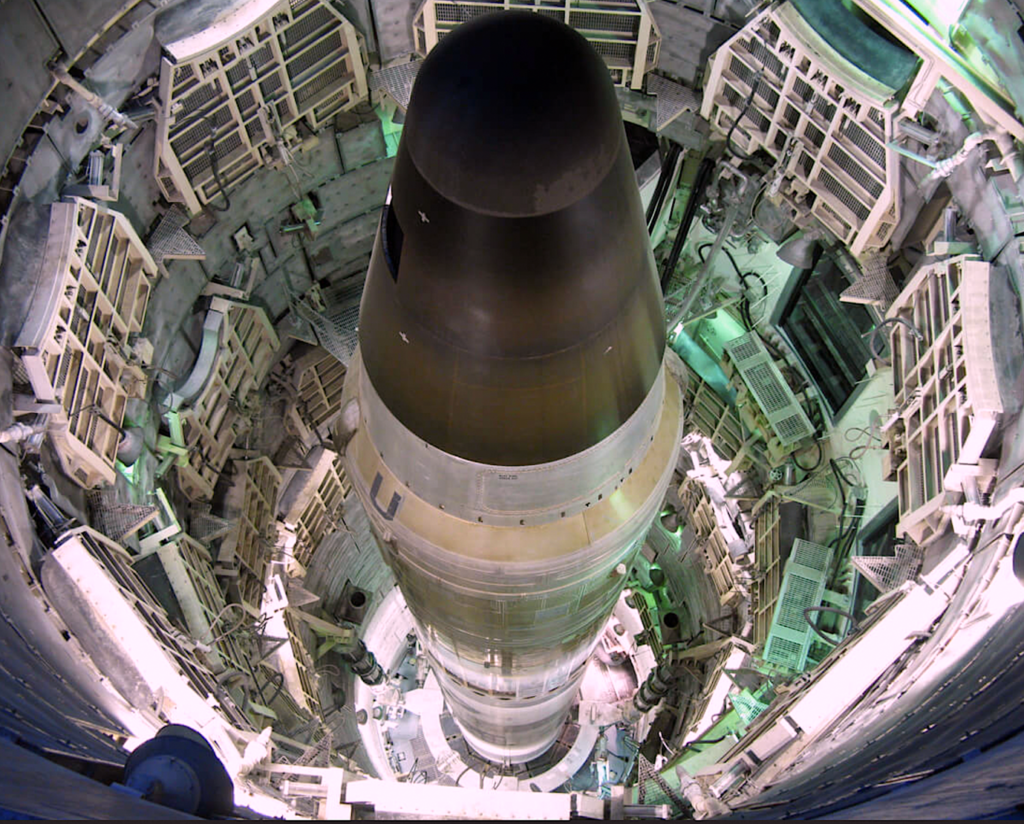
It still sounds like quite a lot: more than enough of them to exterminate whole cities, even whole countries, and turn large regions in each other’s territories into radioactive rubble. But it was still progress, of a sort. The deal was signed in Vienna in 1979 by US President Jimmy Carter and Soviet leader Leonid Brezhnev, although Carter withdrew his plan to put the agreement before the Senate in January 1980 because of tensions between the superpowers, triggered by the Soviet invasion of Afghanistan.
Sound familiar? A peace treaty put on the back burner because one of the two parties involved had invaded another country. When I visited Afghanistan and met up with the Mujahideen, they were still earning a sort of pocket money by selling off the Soviet military materiel they’d gathered, the war having subsided somewhat. I still have a belt I bought from them, its cheaply-made buckle bearing the image of the hammer and sickle. One could also buy boots, military clothing and Kalashnikovs, although the Mujahideen hung onto the best of those if they still worked well.
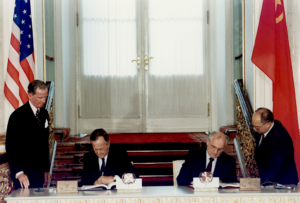
Afghanistan aside, it was in 1982 that the two sides, Russia and the US, sat down again to come up with a solution, this time in Geneva and with a new name: the Strategic Arms Reduction Talks or START. Eventually, New START came into force in 2011 and in 2021 it was extended for a further five years. Theoretically, it caps the number of strategic nuclear warheads that either of the two superpowers can deploy, along with imposing a limit on how many land-based and submarine-based methods of delivery can be used. Together, the US and Russia are responsible for some 90% of the world’s nuclear warheads.

| START STOPS
It all looked so promising: two old rivals talking up ways to ensure they don’t go to war against one another. It was all looking quite rosy when in February 2022, Russia went to war against Ukraine, formerly part of the Soviet empire. Moscow doesn’t call it a war, of course; it’s a “special military operation”, but if you send a lot of soldiers with large weapons into another country with the intention of taking it over, it’s hard to see it as anything other than “war”. Next, Russia stood accused of breaching the terms of the New START Treaty by refusing to permit the mutual inspections that are part of the deal. It’s a lot worse now, with Putin effectively rejecting more than just the inspections part of the deal. Russia said it couldn’t allow Americans to check on its weapons stock because of the on-going “hybrid war” (which it has always blamed variously on the United States and on non-existent Nazis), even though it’s really a war against Ukraine and Moscow started it. Of course, the United States banned certain senior Russian figures from visiting, introducing a travel ban that would have made it very difficult to reciprocate those inspections. There were, however, very good reasons to worry that Russia chose not to observe the terms of the New Start treaty, supposedly designed to rein in the warmongers of East and West and stop them from resorting to using weapons of mass destruction for other reasons. The last version of the treaty that they actually agreed, predictably called “New START”, is what Russia was allegedly breaching, provoking the fear that Putin may be planning to resort to nuclear weapons in the war he launched against Ukraine because the conventional war hasn’t been going well for him, or certainly not as well as he had predicted.
He may have expected a simple walk-over, such as Russia enjoyed when it invaded Crimea, but instead his troops found themselves facing a very angry populace and a large number of Ukrainian soldiers. He, of course, denies violating the terms of the treaty, but to be perfectly honest Putin is not noted for his truthfulness and honesty. One of the demands the Treaty places upon its signatories is that they allow inspections. The Treaty itself sets out its rules and obligations very clearly:

“The treaty contains detailed procedures for the implementation and verification of the central limits on strategic offensive arms and all treaty obligations”, it said before Putin shredded it. “These procedures govern the conversion and elimination of strategic offensive arms, the establishment and operation of a database of treaty-required information, transparency measures, a commitment not to interfere with national technical means of verification, the exchange of telemetric information, the conduct of on-site inspection activities, and the operation of the Bilateral Consultative Commission (BCC).” NATO says Russia wasn’t playing ball because it was refusing to facilitate inspections, while Russia claimed the Treaty itself is “a direct result of the hybrid war unleashed by the West against our country.” Those are the words of Russia’s Ambassador to the United States, Anatoly Antonov, but they somewhat misrepresent reality. After all, the two sides have been edging towards an agreement on weapons stocks since 1968. New START is hardly a surprise, if the war itself is.
| WORDS v. ACTIONS
What came next was a row but, initially a fairly civilised one (albeit not for the citizens of Ukraine, of course). Nobody seems to be uttering immediate threats of unleashing Armageddon upon their opposite number, although Putin pointed out that he could. According to NATO, its allies agree that: “The new START treaty promotes (I must say “promoted” now) international stability by deterring strategic nuclear forces from Russia and the United States. Therefore, we note with concern that Russia has not fulfilled its legal obligations under the New START treaty.” START, of course, stands for Strategic Arms Reduction Treaty, even if it doesn’t make a perfect acronym (it should be SART, but that doesn’t sound so good). However, that means that Washington is choosing to ignore the obstacles it had placed in the way of compliance by banning some Russian experts from travelling there.
The arguments continue: Russia blames the US and the US, of course, blames Russia. Whatever the rights and wrongs it is undoubtedly true to say that the whole issue would not have arisen if Putin hadn’t taken it into his mind to invade Ukraine. We don’t know if he believed that it would be as simple a walkover as it was when his troops invaded and seized Crimea? The first Russian troops to enter Ukraine found that they faced resistance even from elderly women in the street. Some of the troops wrote home that the reaction had surprised them; Putin had assured them they’d be welcomed with open arms, not face weapons. Russia has warned Washington that the Treaty could expire in 2026 without a replacement, while Moscow accuses the United States of refusing to discuss a broader agenda of “strategic stability”.
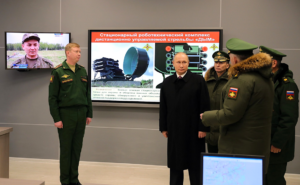
In fact, however, the Americans may also have their reasons for wanting to see the new Treaty fall. According to experts, in its present former the Treaty fails to address the issue of protecting and defending the US and its allies against strategic attack. At the very least, according to Baker Spring, a former Kirby Research Fellow in National Security Policy, a clause should be added to the Treaty stating that the US is committed to “defending its population, territory, institutions and infrastructure to the best of its ability”. Spring is also unhappy with the proposed reduction in US missile defence capabilities, as well as the difficulty the US would have in modernising its missile propulsion and warhead capabilities. Indeed, Spring provides a list of twelve major flaws in the agreement that he claims would leave the US weaker than Russia. “Article V of New START permits strategic nuclear modernization,” he points out, “but the U.S. strategic nuclear arsenal has aged, and the weapons enterprise that is necessary to pursue modernization has atrophied over the past two decades. This includes an alarming weakening of the industrial base for solid rocket motors. These nuclear modernization problems are not in the text of the treaty or its interpretation, but exist only in relation to the treaty, which exacerbates these problems.” If so, that’s hardly Russia’s fault. Another of his concerns is that the verification regime is too weak. In part of its conclusion, Spring writes that: “The American people are depending on their senators to take the necessary actions to defend them against attack.” Spring believes that New START fails to do that and that the flaws he has discovered would be very, very difficult to put right.

The arguments continue: Russia blames the US and the US, of course, blames Russia. Whatever the rights and wrongs it is undoubtedly true to say that the whole issue would not have arisen if Putin hadn’t taken it into his mind to invade Ukraine. We don’t know if he believed that it would be as simple a walkover as it was when his troops invaded and seized Crimea? The first Russian troops to enter Ukraine found that they faced resistance even from elderly women in the street. Some of the troops wrote home that the reaction had surprised them; Putin had assured them they’d be welcomed with open arms, not deployed armaments. Russia has warned Washington that the Treaty could expire in 2026 without a replacement, while Moscow accuses the United States of refusing to discuss a broader agenda of “strategic stability”.
Whatever the White House might think, however, (and in the face of evidence to the contrary) Russia says it remains committed to the New START Treaty; even in his speech to the nation Putin didn’t repudiate it completely. Kremlin spokesperson Dmitry Peskov told the media that it was necessary to preserve at least some “hints” of continuing a dialogue with Washington. “We consider the continuation of this Treaty very important,” he said, although this was before Putin’s speech, of course, describing it as the only one that remained hypothetically viable. Some experts say that with Russia now clearly at war with Ukraine (whatever Moscow may call the conflict; “Special Military Operation” is very obviously a euphemism) the two rivals have been drawn closer to out-and-out war than at any time over the last six decades, and that makes the New START treaty more important than ever, so it’s not a great time to tear it up Moscow has blamed Washington for the travel restrictions it imposed in response to the Ukraine conflict but it also said (before Putin’s speech) that it remains committed to the Treaty itself.
Putin has repeated his original claims that his invasion was in response to neo-Nazis committing crimes in Ukraine. In a statement to the media, Putin suggested that the West is forgetting the lessons of history: “This is evidenced by the crimes against civilians, ethnic cleansing and punitive actions organised by neo-Nazis in Ukraine. It is against that evil that our soldiers are bravely fighting,” he said. Putin’s supporters have accused Ukrainians of mistreating Ukraine’s Russian-speakers in a manner that he says is comparable with the behaviour of Nazi Germany. That’s why he staged his invasion: to “de-Nazify the country”, although the Ukrainian government and the country’s Jewish community have firmly denied that there were any Nazis there at all. Putin has suggested that under-playing the Soviet Union’s part in the defeat of Hitler “equates to justifying the crimes of Nazism and opens the way for it to return.
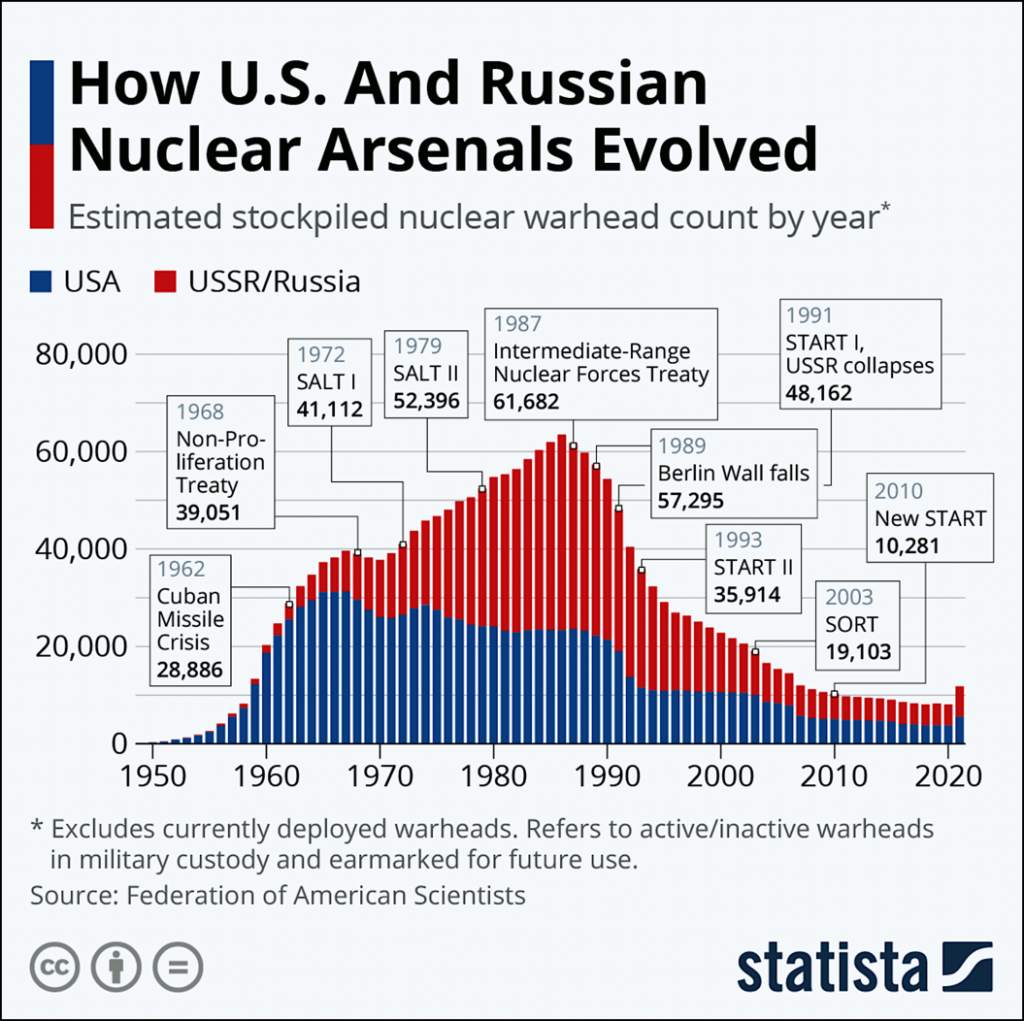
| FORGETTING TO REMEMBER TO FORGET
Every year, an event is held to mark the anniversary of the liberation: Holocaust Remembrance Day. Ironically, and somewhat inexplicably, no Russian representatives were
invited to attend the ceremony this year, exactly 78 years since the Red Army overcame the Nazis and set the prisoners free. They could do nothing, of course, for 1.1-million prisoners the Nazis had slaughtered there, mainly in gas chambers, the bodies being roughly cremated. Most of those victims were Jewish, but the Nazis also killed a great many Poles and Gypsies. Of course, it’s easy to remember Russia’s invasion of Ukraine, which was recent, but somehow harder to recall that it was the Red Army that liberated Auschwitz-Birkenau and other concentration camps. It’s said that tough Russian soldiers were reduced to tears by what they had seen.
By comparison, the disagreement over the New START treaty is of very little consequence, a mere footnote to history, one may think. Of course, Russia’s view of the affair differs considerably from Washington’s. According to the Russian news agency, TASS, all the war crimes (and TASS claims there have been many) have been committed by Ukrainians. Russia’s ambassador to the United States, Anatoly Antonov, has argued repeatedly that Russia has been observing the New START treaty impeccably for years. He told the media that responsibility for breaches and for the escalation of tensions rests squarely with the United States. TASS also reported that Moscow has promised to punish any Ukrainians who have aided the Zelensky government, listing them all as “Nazis”. Antonov is not alone in his allegations or his threats. “All faces, voices, telephones, whereabouts, IP-addresses and messages among all Ukrainian Nazis, who are responsible for humiliation and torture of our comrades are being identified and put on record. The same concerns the ringleaders of the Kiev regime and their minions, who call for torture of Russian soldiers in violation of the prisoners-of-war treatment convention. All of you will be tracked down and inevitably and properly punished,” said Russian Defence Ministry spokesman Igor Konashenkov in what clearly was not a call for peace and reconciliation. The views of this war (and it is a war, not just a ‘military operation’, whatever the Kremlin claims) are so far apart that it’s hard to see how they can ever be reconciled.

Russia has been repeatedly shelling and destroying civilian apartment blocks and residential streets, despite Russian Defence Ministry claims that “civilian areas are safe”. Perhaps Putin should heed the advice given in the foreword of Aldous Huxley’s dystopian novel, Brave New World, first published in 1932: “If you have behaved badly, repent, make what amends you can and address yourself to the task of behaving better next time. On no account brood over your wrongdoing. Rolling in the muck is not the best way of getting clean.” I can’t picture Putin doing much brooding or rolling in the muck, somehow, but then I can’t picture Joe Biden doing it, either.
Looking at the current impasse, however, does give cause for concern. The New START treaty, which is formally known as the “Measures for the Further Reduction and Limitation of Strategic Offensive Arms”, was the last remaining arms control deal between the United States and Russia, and it was no longer being observed. Joe Biden has demonstrated that he wants to preserve New START after his predecessor, Donald Trump, tore up a previous arms control agreement, saying that no treaty was worthwhile unless it included China, even though China’s known nuclear arsenal is a mere fraction of the size of those held by Russia and the United States. It’s a simple fact that the two sides have to trust each other for the New START treaty to work, and they don’t, as the belligerent wording of their press releases shows.
As a clear example of the suspicion surrounding arms limitation treaties, First Post reports that: “A group of Republicans active on defence policy responded that Biden had ‘naively’ extended New START and said that Russia ‘cannot be trusted to abide by any international agreement.’” If that is really true, there would seem little point in talking about treaties of any kind, but surely even a treaty you don’t fully trust is better than the total absence of one and a continuing conflict? “We urge President Biden to direct the Department of Defence to prepare for a future where Russia may deploy large numbers of warheads, well in excess of New START treaty limits,” said a statement by Republicans including Representative Mike Rogers, chairman of the House Armed Services Committee. The US State Department, however, said that the Treaty was intended to “make the world safer”. If it can be implemented effectively, it should do that.

The New START treaty is the last remaining arms control agreement between the United States and Russia and its proper name is the Measures for the Further Reduction and Limitation of Strategic Offensive Arms. At least, that’s how it’s described on the website of the US State Department. It limits how many warheads and delivery systems each side may have, but it leaves enough fissile material hanging about to blow up the world and leave it poisonously radioactive for millennia. As First Post puts it: “It also limits the deployed Avangard and the under development Sarmat, the two most operationally available of the Russian Federation’s new long-range nuclear weapons that can reach the United States. Extending New START ensures we will have verifiable limits on the mainstay of Russian nuclear weapons that can reach the US homeland for the next five years.” That depends on compliance, of course. Feeling any safer? These treaties have always relied on the principle of “mutually assured destruction”: you wipe us off the face of the Earth and we’ll do it right back to you.
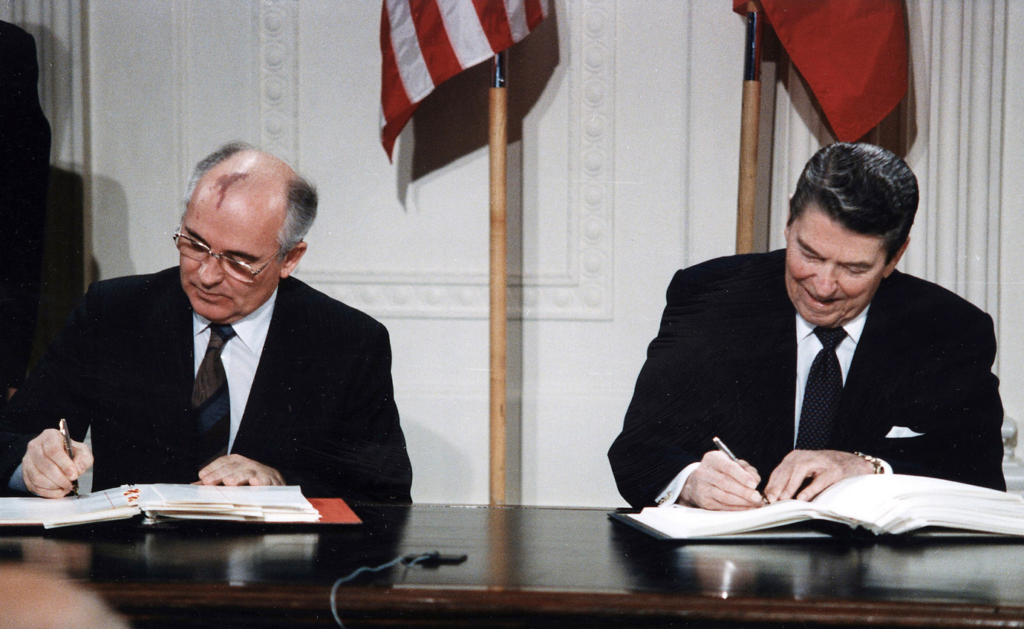
The Intermediate Range Nuclear Forces treaty actually reduced the numbers of weapons both sides were allowed to hold and put a ceiling in place. Signed in 1987, it held until August 2019, when Donald Trump decided the US should withdraw from it. He claimed that it failed to protect the US, although few experts agreed with his analysis. Russia has been warning that the existing treaty could expire in 2026 with no replacement in place or even on the drawing board; now it looks like being scrapped this year. At the same time, of course, Russia continues in its bid to take over Ukraine and rule it from Moscow, a prospect nobody in the West (or in Kyiv) would welcome. It will take a person with rare vision to see a way through the mess and to make the world safe again. Where is that person, I wonder?
